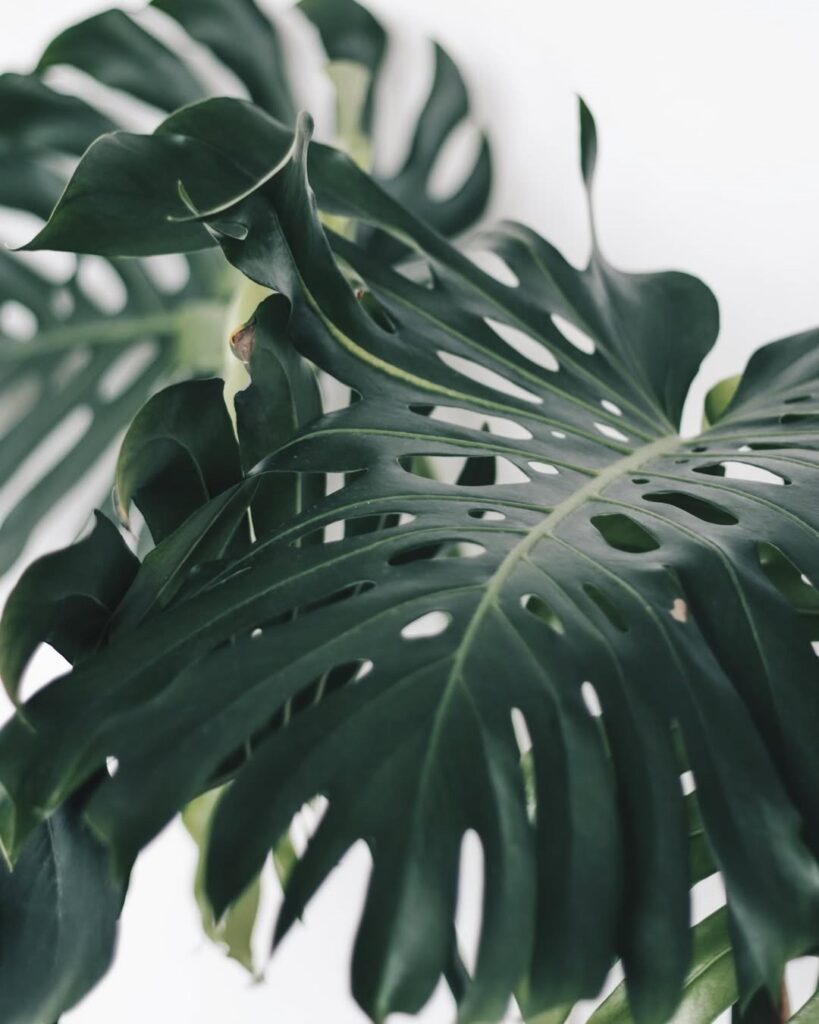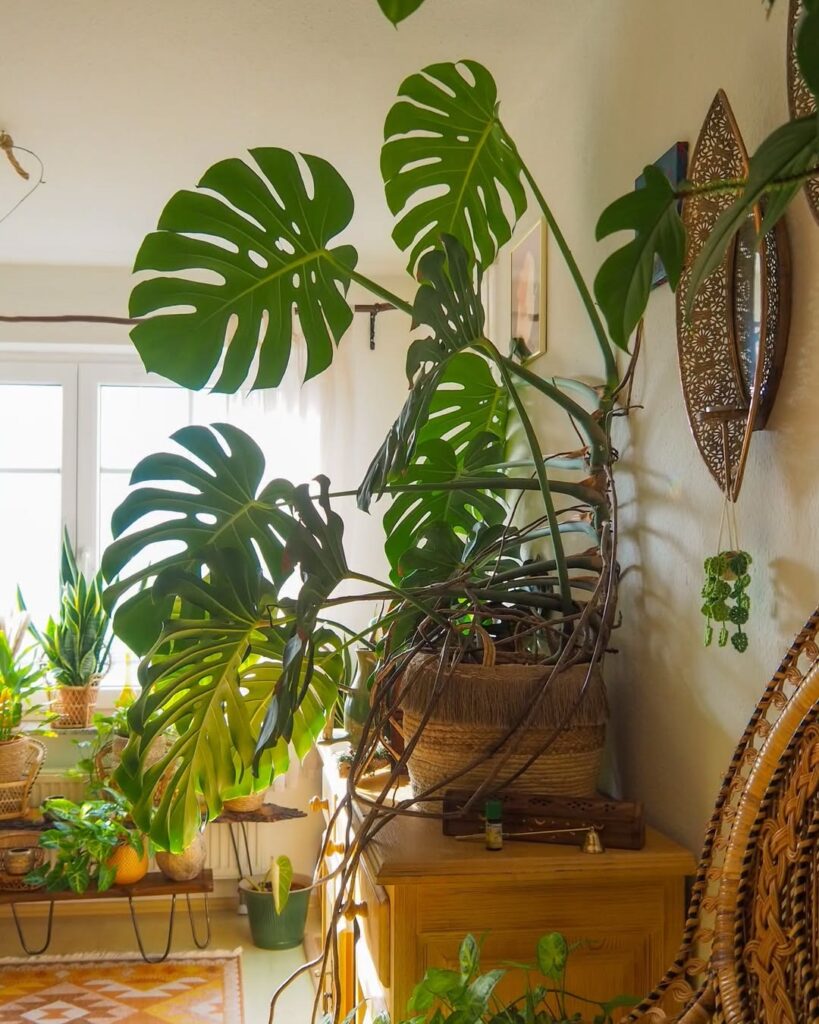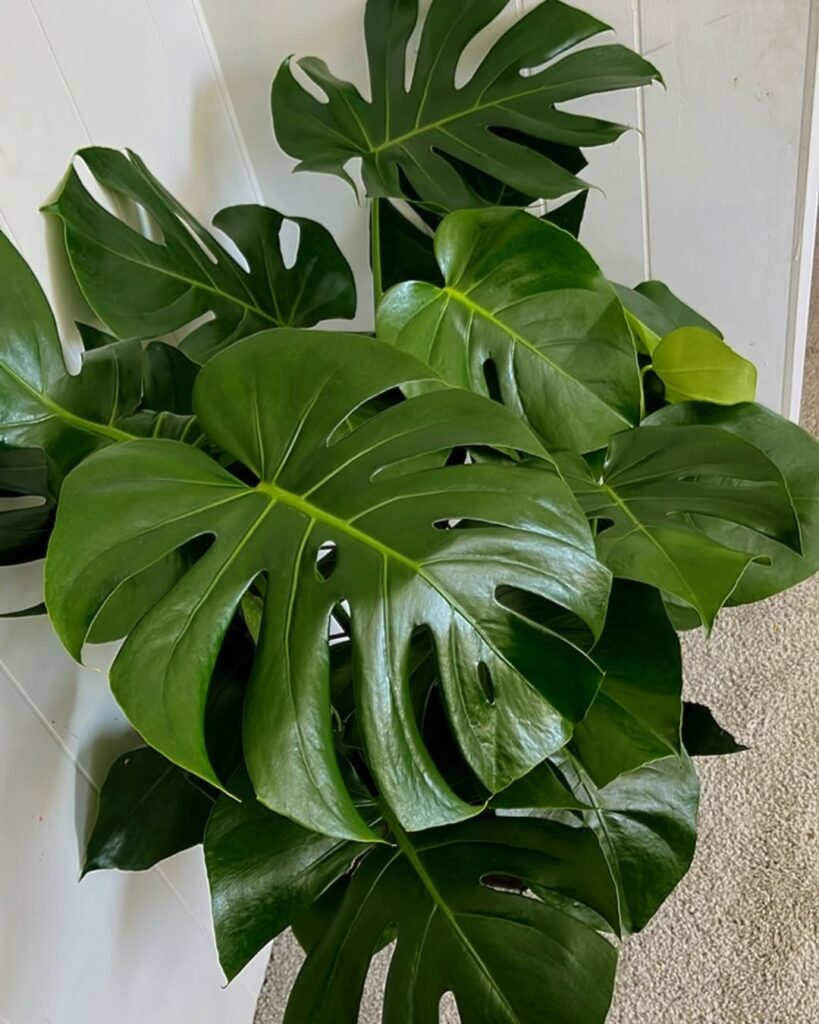Monstera Deliciosa, commonly known as the Swiss Cheese Plant, is a favorite among indoor plant enthusiasts for its impressive size and iconic perforated leaves. Native to the tropical rainforests of Central America, this plant brings a touch of the jungle into your living space. Whether you’re a seasoned plant parent or a beginner, this guide will help you grow a healthy Monstera with abundant fenestrations and robust growth.

Contents
Choosing the Right Environment
Lighting
- Bright, Indirect Light: Place your Monstera near an east or south-facing window with filtered sunlight. Direct sunlight can scorch the leaves, while too little light may impede growth and fenestration development.
- Artificial Lighting: If natural light is limited, supplement with fluorescent or LED grow lights set to mimic indirect sunlight.
Temperature and Humidity
- Optimal Temperature: Maintain indoor temperatures between 65°F and 85°F (18°C – 29°C). Avoid cold drafts and sudden temperature changes.
- Humidity Levels: Monstera thrives in humidity levels above 60%. Increase humidity by:
- Using a humidifier.
- Placing the pot on a tray filled with pebbles and water.
- Grouping it with other humidity-loving plants.
Potting and Soil
Choosing a Pot
- Size Matters: Start with a pot that’s slightly larger than the root ball. As the plant grows, repot every 1-2 years to accommodate growth.
- Drainage: Ensure the pot has drainage holes to prevent waterlogging, which can lead to root rot.
Soil Requirements
- Well-Draining Mix: Use a soil mix that retains moisture but drains well. A recommended mix includes:
- Peat Moss or Coco Coir: Retains moisture.
- Perlite or Pumice: Enhances drainage.
- Orchid Bark or Charcoal: Improves aeration.
Watering Techniques
- Consistent Moisture: Water when the top 2 inches of soil feel dry to the touch.
- Avoid Overwatering: Ensure excess water drains out. Empty the saucer beneath the pot to prevent root rot.
- Seasonal Adjustments: Reduce watering frequency during cooler months when the plant’s growth slows.
Encouraging Fenestrations

Understanding Fenestrations
Fenestrations are the natural holes and splits in Monstera leaves that develop as the plant matures.
Tips to Increase Fenestrations
- Adequate Light: Provide plenty of bright, indirect light to encourage leaf development.
- Proper Nutrition: Fertilize during the growing season with a balanced, water-soluble fertilizer every 4-6 weeks.
- Age Matters: Be patient. Younger plants may not exhibit fenestrations until they mature.
Supporting Growth

With Support
- Moss Poles and Trellises: Monstera is a climber by nature. Providing support mimics its natural habitat.
- Installation: Insert a moss pole or trellis into the pot near the base.
- Training: Gently tie the stems to the support using soft ties.
- Benefits: Supports larger leaves and promotes vertical growth.
Without Support
- Allow to Trail: Letting the plant trail can create a lush, cascading effect.
- Pruning: Regularly prune to manage size and encourage bushier growth.
Maximizing Size and Growth Speed

Fertilization
- Regular Feeding: Use a balanced 20-20-20 fertilizer during spring and summer.
- Organic Options: Consider organic fertilizers like worm castings or fish emulsion for slow-release nutrients.
Repotting
- Give Roots Room: Repotting into a larger pot allows roots to expand, promoting overall growth.
- Timing: The best time to repot is in early spring before the active growing season.
Pruning and Propagation
- Prune Wisely: Remove dead or yellowing leaves to direct energy to new growth.
- Propagate Cuttings: Stem cuttings can be rooted in water or soil to grow new plants.
Common Issues and Solutions
Pests
- Watch for: Mealybugs, spider mites, and scale.
- Treatment: Wipe leaves with insecticidal soap or neem oil.
Yellowing Leaves
- Overwatering or Underwatering: Adjust your watering schedule accordingly.
- Nutrient Deficiency: Ensure regular fertilization.
Conclusion
Growing a Monstera Deliciosa indoors can be a rewarding experience, resulting in a stunning centerpiece that brings life to any room. By providing the right environment, proper support, and attentive care, your Monstera will flourish with impressive, fenestrated leaves.
Additional Tips
- Leaf Cleaning: Dust leaves regularly with a damp cloth to maximize photosynthesis.
- Rotate the Plant: Turn the pot every few weeks for even growth and leaf development.
- Observation: Pay attention to your plant’s signals; changes in leaf color or growth can indicate its needs.
Embrace the journey of nurturing your Monstera Deliciosa, and enjoy the tropical beauty it brings to your indoor space.
